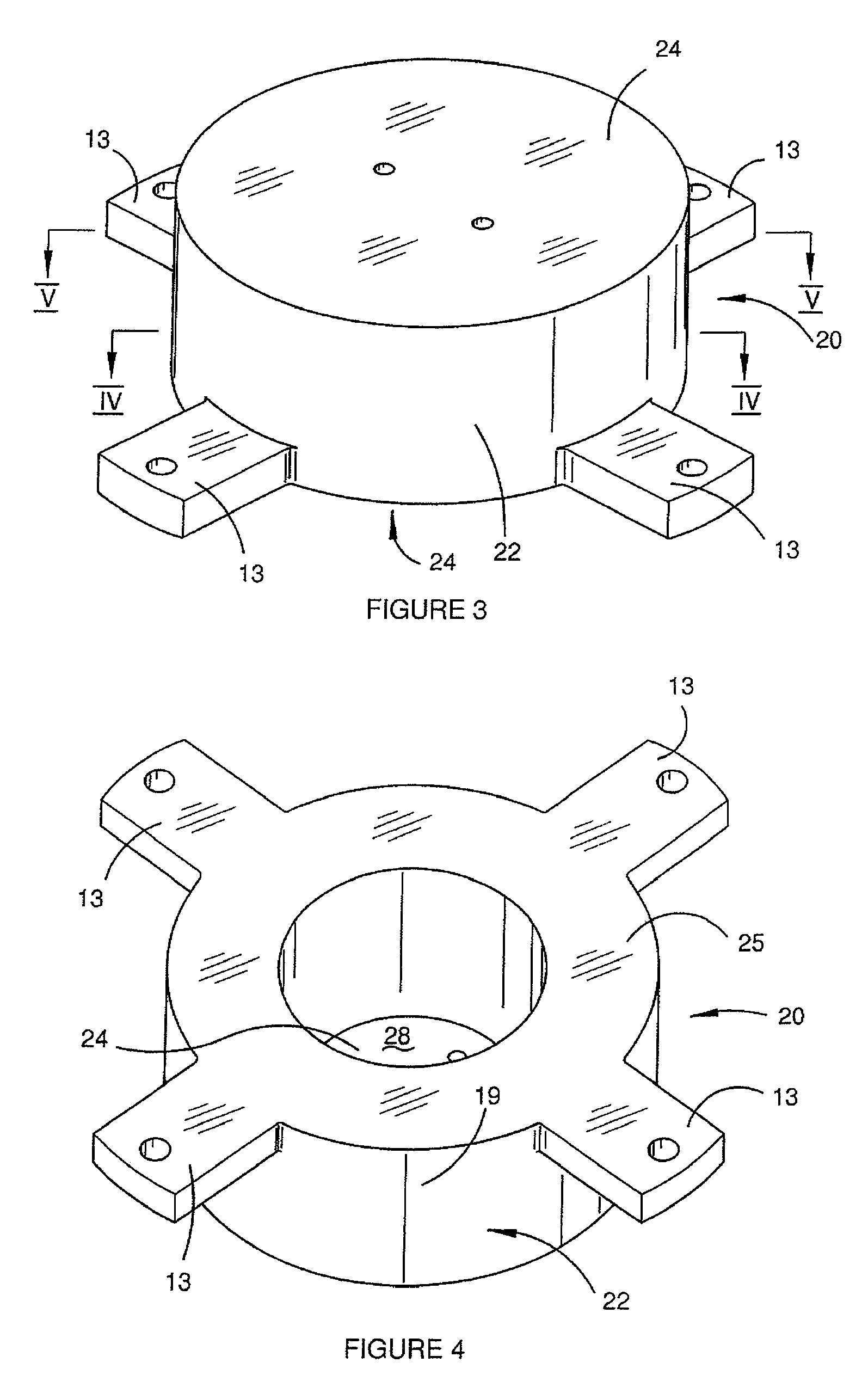Gravity gradiometer
a gravity gradiometer and gravity field technology, applied in the field of gravity gradiometers, can solve the problems of noise or swamp, oscillation of both sensor masses, and small oscillation, and achieve the effect of reducing the impact of external acceleration
- Summary
- Abstract
- Description
- Claims
- Application Information
AI Technical Summary
Benefits of technology
Problems solved by technology
Method used
Image
Examples
Embodiment Construction
[0059]FIG. 1 is a schematic view of a gravity gradiometer 1 according to a specific embodiment of the present invention. The gravity gradiometer 1 is arranged for vertical positioning relative to a ground plane. Throughout this specification the ground plane coincides with an x-y plane of an x,y,z-coordination system and consequently the gravity gradiometer is in this embodiment arranged for orientation along the z-axis so that the Γxy and (Γxx-Γyy) components of the gravity gradient tensor can be measured.
[0060]The function of the gravity gradiometer 1 may be briefly summarised as follows. The gravity gradiometer has in this embodiment two substantially identical sensor masses which are pivotally mounted on a mounting so that they can oscillate relative to the mounting. The sensor masses with mounting are rotated about the z-axis and with an angular frequency that approximately equals half the resonance frequency of sensor masses. A gravity gradient will result in a force on the se...
PUM
 Login to View More
Login to View More Abstract
Description
Claims
Application Information
 Login to View More
Login to View More - R&D
- Intellectual Property
- Life Sciences
- Materials
- Tech Scout
- Unparalleled Data Quality
- Higher Quality Content
- 60% Fewer Hallucinations
Browse by: Latest US Patents, China's latest patents, Technical Efficacy Thesaurus, Application Domain, Technology Topic, Popular Technical Reports.
© 2025 PatSnap. All rights reserved.Legal|Privacy policy|Modern Slavery Act Transparency Statement|Sitemap|About US| Contact US: help@patsnap.com



